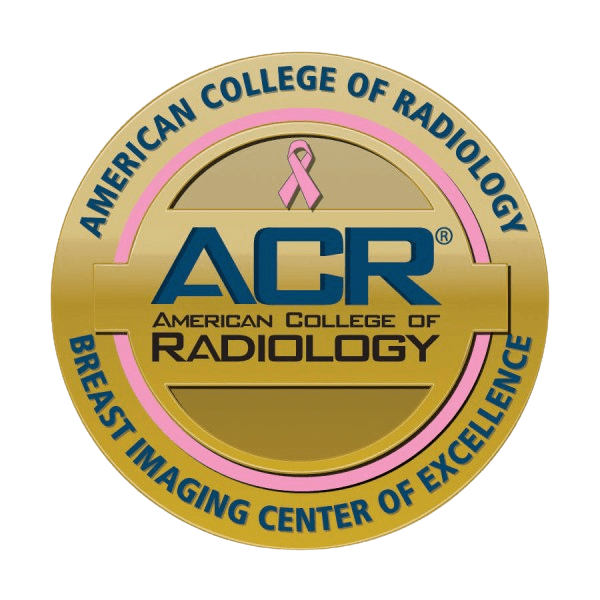Women's Care
- Women's Health Home
- Adolescent Gynecology
- Breast Cancer Screening and Diagnosis
- Center for Maternal and Fetal Care
- Fertility Services
- Gynecology
- Menopause Management
- Nurse Midwifery Care
- Pregnancy and Childbirth
- Robotic-Assisted Surgery
- Women's Pelvic Health and Reconstructive Surgery
- OB-GYN Emergency
Breast Cancer Screening and Diagnosis

Regular health screenings can find breast cancer sooner, when it’s easier to treat.
We use the latest diagnostic techniques to detect and treat cancer as early and accurately as possible. We perform screening anddiagnostic mammograms, 3-D mammograms, ultrasounds, magnetic resonance imaging (MRI), and ultrasound-guided and stereotactic breast biopsies. Our technicians are licensed, certified, and experienced in breast imaging, and all of our radiologists are fellowship-trained, board-certified specialists.
Breast cancer screening is done in women with no signs or symptoms of breast cancer. If a screening shows an abnormality, a radiologist will look at its shape and layout to judge if it’s cancerous or not. This is a separate process from screening and is known as diagnostic imaging. Some abnormalities occur naturally with age and do not mean cancer is present.
If radiologists find something suspicious, they may recommend an ultrasound or a breast MRI. If the lesion still remains of concern, a biopsy is required. If cancer is detected, a CT, PET, PET/CT, or bone scan may be used to see if the cancer has spread.
At every point, our cancer specialists and staff are as dedicated to giving each patient emotional support and guidance as they are to providing advanced medical treatment.
UMMC breast imaging services
Screening appointments and locations
Primary care physicians or an OB-GYN will recommend the correct age to start annual screenings.
- To schedule a screening, call (601) 815-4723.
- Referring physicians should call (866) 862-3627 (option 1).
If you’ve had a mammogram at another facility, bring those images with you or have them sent to the UMMC Breast Imaging team. Comparing old and new images helps detect subtle changes in your breast and reduce the risk of a callback. Once your images have been reviewed, a report will be sent to your primary care physician to share with you.
Second opinions
Many patients choose to seek a second option on a cancer diagnosis. Our physicians provide second opinions by reviewing diagnostic images sent from other imaging locations outside UMMC.
Pink Ribbon Facility
UMMC Breast Imaging is a designated Pink Ribbon Facility. We are recognized for providing excellence in breast health and for our commitment to and support of the well-being of women in Mississippi.
Screening guidelines
Women should be routinely screened for breast cancer, even if they show no signs or symptoms. Physicians at the UMMC Cancer Center and Research Institute recommend regular breast exams beginning in young adulthood.
- Monthly self-exams beginning in your 20s. Know how your healthy breasts look and feel, and tell your doctor of any changes.
- Clinical exams by a doctor every three years beginning in your 20s and 30s and every year beginning in your 40s.
- Annual mammograms beginning at age 40. If you're at high risk for breast cancer, talk to your doctor about a screening MRI and beginning mammograms earlier.
Types of screenings
Screening mammogram
This X-ray of the breasts may show lumps or other signs of cancer. Many lumps detected in a mammogram are benign, but regular breast screenings are important for early detection.
Three-dimensional (3-D) mammography
3-D mammography takes images of breast tissue layer by layer, showing fine details not visible with traditional mammograms. Studies show 3-D mammograms detect invasive breast cancers 41 percent more often, and reduce false positives by up to 40 percent.
Breast ultrasound
Sound wave technology is used to examine breast tissue and to assess blood flow to areas within the breast. Ultrasound images help radiologists evaluate lumps seen on a mammogram and determine whether they are benign (noncancerous) or need further testing.
Bone scan
A bone scan allows doctors to check for cancer cells in bones. Doctors inject a small amount of radioactive material which travels through the bloodstream and collects in damaged areas of bone. A scanner can then show where the material collects. This test may be used to help detect whether breast cancer has spread into any bones. If “hot spots” show up in the scan, other tests may be needed to rule out arthritis or other bone diseases.
Computed tomography (CT)
Sometimes called a “CAT scan,” a CT scan provides detail about what is going on inside the body. In a CT scan, an X-ray beam moves in a circle around the entire body. The scanned information is sent to a computer that interprets the X-ray data and displays it in two-dimensional form on a monitor. Doctors may recommend a CT scan to see if cancer has spread.
Magnetic resonance imaging (MRI)
An MRI uses magnets and radio waves to make a detailed image of the breast. Your doctor may recommend an MRI if you have certain risk factors for breast cancer, particularly dense breasts, or if a regular mammogram screening shows abnormalities.
Positron emission tomography (PET)
In a PET scan, a small amount of radioactive glucose (sugar) is injected into a vein, and a scanner makes detailed, digital images of where in the body the glucose is used. Because cancer cells often use more glucose than normal cells, the images can be used to find cancer cells.
PET/CT
This single scan combines the ability of a CT scan to show tissue that looks abnormal and a PET scan to show tissue that acts abnormally. The UMMC Cancer Center and Research Institute radiology department’s PET/CT scanner offers the highest level of detailed image quality currently available. The ability to look at CT and PET images together helps doctors more precisely identify the location of abnormal, possibly malignant (cancerous) tissue in the body.
Types of biopsies
Stereotactic needle-guided biopsy
For this exam, the patient is seated with mammography compression. A radiologist uses the Affirm 3D breast biopsy guidance system to detect the area of concern in the breast, and then the doctor uses a small needle to remove tissue samples.
Surgical biopsy
Surgical biopsies are rare now. A surgeon removes all or part of the suspicious lump, which a pathologist then examines. Sometimes the surgeon will use an incisional biopsy, which removes part of the mass, or an excisional biopsy, which removes the entire mass.
Tomosynthesis (3-D) guided biopsy
This is a minimally invasive procedure using X-ray images to gather tissue samples from the breast. Our doctors are able to locate and target specific areas of breast tissue for investigation.
Ultrasound-guided needle biopsy
Doctors use ultrasound to help them guide a needle into the right spot to collect a tissue sample.


